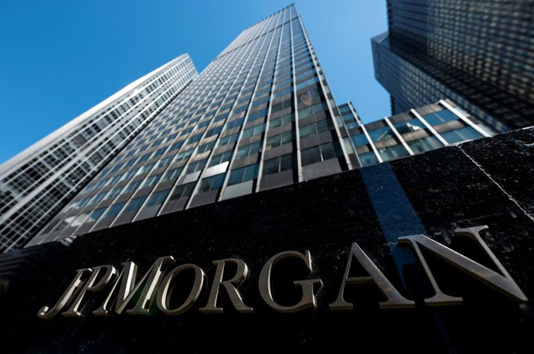NEW YORK, July 17, 2019 (BSS/AFP) – JPMorgan Chase reported record
quarterly profits on Tuesday behind strong consumer businesses on a day of
mixed bank earnings that underscored the sector’s vulnerability to lower
Federal Reserve interest rates.
Wells Fargo also notched higher profits, while Goldman Sachs reported a
dip in earnings but still topped analyst expectations.
The trio of bank results moved markets into the heart of second-quarter
earnings season, which comes against a backdrop of uncertainty over
international trade and an anticipated easing of monetary policy, with the
Fed expected to cut interest rates later this month.
Bank profits have been boosted the last few years from a series of
interest rate hikes. But the Fed has pivoted away from that stance amid
concerns about a weakening manufacturing sector, sluggish inflation and the
impact of trade conflicts on the economy.
Lower interest rates are generally viewed as a drag for large banks
because it reduces the net interest income — the difference between the
interest rates it charges consumers for loans and the interest it must pay
for deposits.
At JPMorgan, key areas of strength included consumer banking, where it
scored from higher net interest income, the credit card business and higher
auto loans and lease originations.
Net profit came in at $9.7 billion, up 16.1 percent and a company record.
Revenues were up 4.1 percent to $29.6 billion.
Chief executive Jamie Dimon said uncertainty about issues such as trade
and monetary policy is “a constant” while geopolitical tensions “may be a
little bit higher now than normal,” but added that “the consumer in the
United States is doing fine” and economic conditions are solid in other key
markets.
“So I wouldn’t get too pessimistic yet,” Dimon said.
JPMorgan executives said they anticipate up to three interest rate cuts
this year, and forecast $57.5 billion in 2019 net interest income, down from
$58 billion previously.
– Higher profits at Wells –
At Wells Fargo, net income rose 19.7 percent to $6.2 billion, while
revenues were essentially flat at $21.6 billion.
Wells Fargo experienced a dip in net interest income due to a significant
jump in interest payments for deposits. But that was largely offset by other
gains, such as higher service charges on deposit accounts and lower non-
interest expenses.
Executives were peppered with questions about the expected hit from Fed
actions, as well as additional costs for auditing, risk management and other
governance initiatives following a fake accounts scandal that roiled the bank
a couple of years ago.
Lingering skepticism of the bank prompted the resignation in March of
chief executive Tim Sloan. Interim chief executive Allen Parker said he had
no information about the selection of a new CEO and that the board was
overseeing the search for an outsider to lead the bank.
– Goldman trading hit –
At Goldman Sachs, net income was $2.2 billion, down 6.4 percent from the
year-ago period. Revenues dropped 1.8 percent to $9.5 billion.
Goldman suffered from a decline in fixed income, currency and commodity
trading, a weakness at other large banks due in part to uncertainty over
trade and interest rates.
“We’re encouraged by the results for the first half of the year as we
continue to invest in new businesses and growth to serve a broader array of
clients,” chief executive David Solomon said in a statement.
“Given the strength of our client franchise, we are well positioned to
benefit from a growing global economy.”
Shares in JPMorgan closed trading up 1.1 percent at $115.12. Wells Fargo
dropped 3.0 percent to $45.30, while Goldman Sachs added 1.9 percent, rising
to $215.52.



